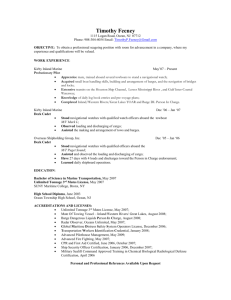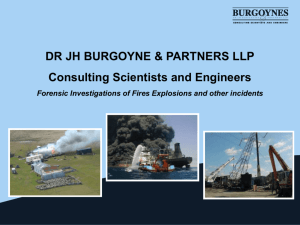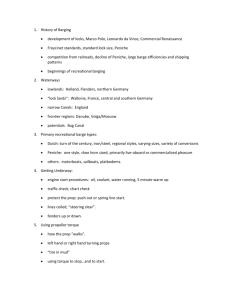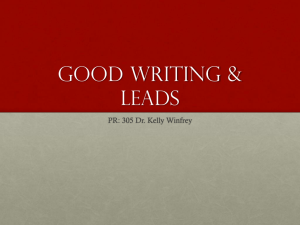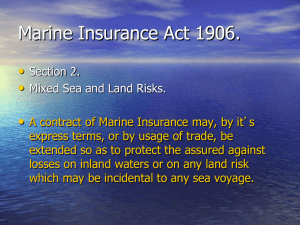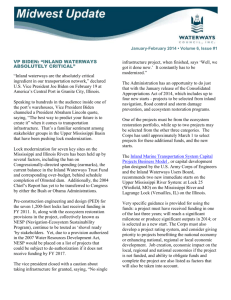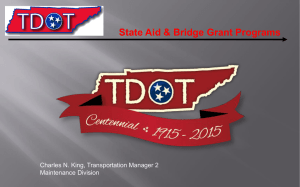Perspectives on Security Concerns Reflected in the Inland River
advertisement
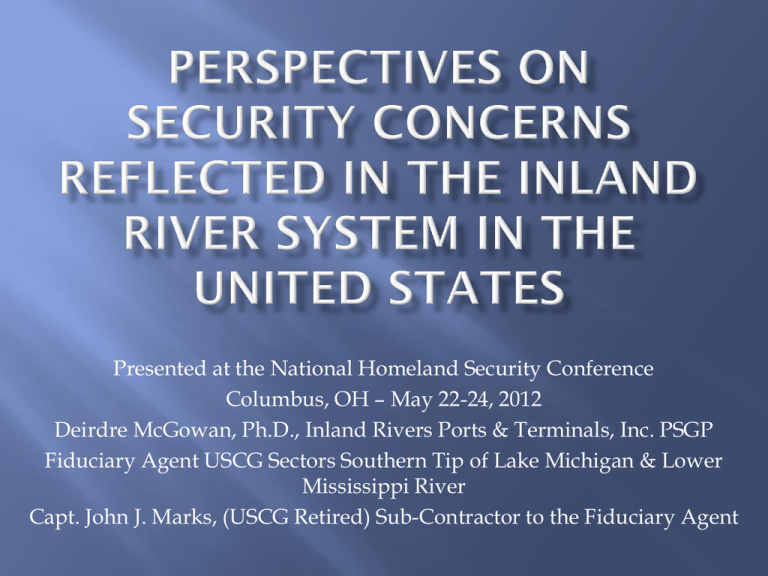
Presented at the National Homeland Security Conference Columbus, OH – May 22-24, 2012 Deirdre McGowan, Ph.D., Inland Rivers Ports & Terminals, Inc. PSGP Fiduciary Agent USCG Sectors Southern Tip of Lake Michigan & Lower Mississippi River Capt. John J. Marks, (USCG Retired) Sub-Contractor to the Fiduciary Agent Map of Inland System Marad Cargo Capacity High / Low water Bridge collapse Lock Failure A barge needs a certain amount of water in order to float and not touch bottom. A vessel’s water depth is called the “draft”. The more cargo a barge carries, the more it will weigh, meaning it will displace more water and require more draft. The draft (or draught) of a ship’s hull is the vertical distance between the waterline and the bottom of the hull (keel), with the thickness of the hull included. Even a slight decrease in the depth of a waterway will require a barge to reduce the amount of cargo it is carrying. On the flip side, more water means more cargo. This, in turn, translates into fewer trips being needed to transport goods. . A prolonged period of below normal rainfall that began after the January 2005 drought brought river elevations to some of their lowest levels in recent years. Both the Mississippi and Lower Ohio Rivers were low enough to affect river transportation. A barge passes by sandbars in the Ohio River near Paducah, KY in mid-August. Photo taken from Fort Massac State Park in Metropolis, Illinois. The Interstate 24 bridge is visible. High water brings another, unique set of challenges. Pictured below, the towboat “Jock” pushes a load of barges containing light cycle oil, in the Mississippi River, underneath the bridge connecting Natchez, MS to Vidalia, LA, May 21, 2011. Disruption of the supply-chain can have far-reaching implications, both economic and security. When that chain was interrupted in Japan in 2011 by the combination of the earthquake and the tsunami, it interrupted not only manufacturing in that country it also interrupted needed supplies for manufacturing of automobiles, telecommunications and consumer electronics in the United States. The inland river system transports major components of our nation’s supply chain. We can’t afford a shut-down of the inland waterway! There are more than 600,000 bridges in the United States that are 20 feet long or longer, some over a century old and many of them national iconic monuments. Research is underway to determine how materials, connection details and designs in aging bridges react to IEDs, other explosives, kinetic impact, intense fires and other accidents. This bridge collapsed in 13 seconds Some sections of the Mississippi River appeared to run backward for a short time. Sand blows were common throughout the area, and can still be seen from the air in cultivated fields. The shock waves propagated efficiently through the firm Midwestern bedrock, and were felt by residents as far away as Pittsburgh, Pennsylvania, Norfolk, Virginia, Boston, and Toronto. Sidewalks were reported to have been cracked and broken in Washington, D.C. “It was what we call a thrust fault. And it came up to the surface beneath the river and actually created a stair step in the river bottom to where it set up waves that went coursing back upstream,” says Susan Hough of the U.S. Geological Survey in Pasadena, Calif. She says much of what we know about those early quakes comes from firsthand accounts, like one from future president Zachary Taylor. He felt the shaking 230 miles away in Louisville. A study by the Texas Transportation Institute determined that when a lock closes, transport costs escalate $1.50 per ton per lock. When Greenup (mile marker 341 on the Ohio) closed for 52 days, it cost $42 million, and that was with an operational auxiliary lock. When McAlpine (mile marker 606 on the Ohio) closed for 11 days, the cost was estimated at $6.3 million. On the Ohio, the time locks have been out of service to make emergency repairs has increased from 25,000 hours per year to 80,000 hours per year since 2000.

